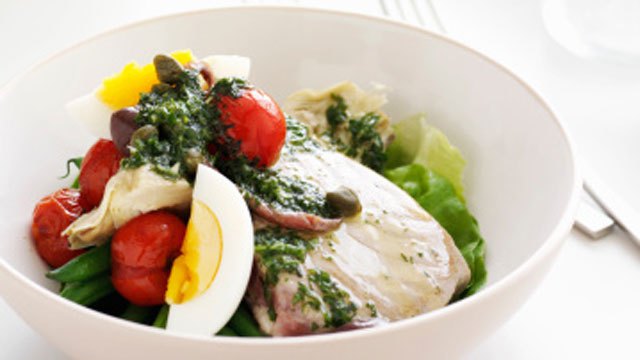You may have seen reports in the news lately questioning the benefits of breakfast for weight loss, but I’m not ready to sanction skipping. In my experience, eating breakfast strongly supports weight control, and several studies back what I’ve seen in my 15+ years of counseling clients – breakfast fuels your body when you’re most active, and therefore most likely to burn off what you’ve eaten. It also tends to prevent late night overeating, when you’re less active, and more prone to racking up a fuel surplus that feeds fat cells.
Also, weight loss aside, “breaking the fast” is a savvy nutrition strategy, because it’s a chance to fit in servings of produce, whole grains, healthy fats, and lean proteins. Missing that opportunity, particularly day after day, can lead to shortfalls that deprive your body of important health protective nutrients.
Eating breakfast, especially one with protein, is also a smart way to build and maintain metabolism-boosting muscle. One recent study, published in the Journal of Nutrition, found that muscle building was 25% greater among people who ate a diet with an evenly distributed protein intake, compared to those who consumed less protein at breakfast, slightly more at lunch, and the majority of their protein at dinner.
Finally, a study published last year from the American Heart Association found that over a 16 year period, regular breakfast skippers had a 27% higher risk of a heart attack or fatal heart disease.
If you’re on board for a daily breakfast, but your biggest barrier is time, here are five tips and tricks to help you create shortcuts, so you can reap the benefits without running late.
Chill your oatmeal
Oatmeal doesn’t have to be served warm. Cook, then chill individual portions, and stash them in the fridge in small containers you can grab, along with a spoon, on your way out the door. Just mix a protein powder (like pea, hemp, or organic whey) into rolled oats, add hot water, stir, fold in fresh fruit, cinnamon, and nuts, and chill. Or skip the protein powder, and mix the oats, fruit, cinnamon, and nuts into nonfat organic Greek yogurt, and chill to make a grab-n-go mueslix.
Hard boil it
Many of my clients enjoy omelets on the weekends, but feel like an egg-based breakfast takes too much time during the week. For a make-ahead option, prep hard boiled organic eggs on a Sunday for the upcoming week. While you’re making dinner, take a few extra minutes to whip up a simple egg salad for breakfast the next morning. Mix chopped egg with either guacamole or pesto, diced or shredded veggies, and a small scoop of cooked, chilled quinoa or brown rice. Grab a portion with a fork in the a.m., and you’re good to go.
Have dinner for breakfast
It may seem odd to chow down on a garden salad topped with lentils or salmon at 8 am, but who says breakfast meals have to look different than lunch or dinner? Many of my clients make double portions in the evening, and eat seconds for breakfast the next day. Give it a try – you may just find that warmed up stir fry, veggie “pasta” or a crisp entrée salad is your new favorite way to start the day.
Pre-whip your smoothie
Smoothies are pretty fast, but I know that when you’re running late, just tossing ingredients into a blender and pressing a button can require more time than you can spare. If that tends to be the case, blend up a smoothie just before bed, stash it in a sealed to-go jug in the fridge, grab it on your way out the door, and shake it up before sipping. If you’re a chocolate lover, but you want to sneak some greens into your first meal of the day, check out my chocolate cherry kale smoothie recipe.
Make a meal out of snack foods
It’s perfectly OK to cobble together a breakfast from an assortment of snack foods, including veggies with hummus and whole grain crackers, or trail mix made from nuts or seeds, unsweetened preservative-free dried fruit, and a whole grain cereal you can eat with your hands. For more easy and energizing ideas, check out Health’s snack recipe database. Bon (breakfast) appetit!
Source: health


